BMW 3 Series Saloon vs VW Passat – Which one offers the better deal?
Compare performance, boot capacity, efficiency and price at a glance.
Find out which car is the better choice for you – BMW 3 Series Saloon or VW Passat?
Costs and Efficiency:
Price and efficiency are often the first things buyers look at. Here it becomes clear which model has the long-term edge – whether at the pump, the plug, or in purchase price.
VW Passat has a to a small extent advantage in terms of price – it starts at 35700 £, while the BMW 3 Series Saloon costs 39900 £. That’s a price difference of around 4208 £.
Fuel consumption also shows a difference: VW Passat manages with 0.30 L and is therefore convincingly more efficient than the BMW 3 Series Saloon with 0.80 L. The difference is about 0.50 L per 100 km.
As for range, the VW Passat performs noticeable better – achieving up to 133 km, about 32 km more than the BMW 3 Series Saloon.
Engine and Performance:
Under the bonnet, it becomes clear which model is tuned for sportiness and which one takes the lead when you hit the accelerator.
When it comes to engine power, the BMW 3 Series Saloon has a decisively edge – offering 530 HP compared to 272 HP. That’s roughly 258 HP more horsepower.
In acceleration from 0 to 100 km/h, the BMW 3 Series Saloon is decisively quicker – completing the sprint in 3.50 s, while the VW Passat takes 5.80 s. That’s about 2.30 s faster.
There’s no difference in top speed – both reach 250 km/h.
There’s also a difference in torque: BMW 3 Series Saloon pulls significantly stronger with 700 Nm compared to 400 Nm. That’s about 300 Nm difference.
Space and Everyday Use:
Cabin size, boot volume and payload all play a role in everyday practicality. Here, comfort and flexibility make the difference.
Both vehicles offer seating for 5 people.
In curb weight, VW Passat is barely noticeable lighter – 1573 kg compared to 1575 kg. The difference is around 2 kg.
In terms of boot space, the VW Passat offers noticeable more room – 690 L compared to 480 L. That’s a difference of about 210 L.
When it comes to payload, VW Passat to a small extent takes the win – 577 kg compared to 495 kg. That’s a difference of about 82 kg.
Who comes out on top?
Overall, the VW Passat shows itself to be dominates this comparison and secures the title of DriveDuel Champion.
It convinces with the more balanced overall package and proves to be the more versatile choice for everyday use.
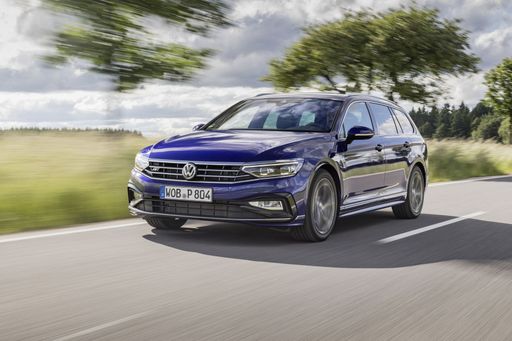
VW Passat
BMW 3 Series Saloon
The BMW 3 Series Saloon seamlessly blends elegance with sporty performance, offering a driving experience that's both dynamic and refined. Its meticulously crafted interior and intuitive technology create a comfortable and connected environment for both driver and passengers. On the road, the 3 Series delivers agile handling and a smooth ride, making it a standout choice in its class.
details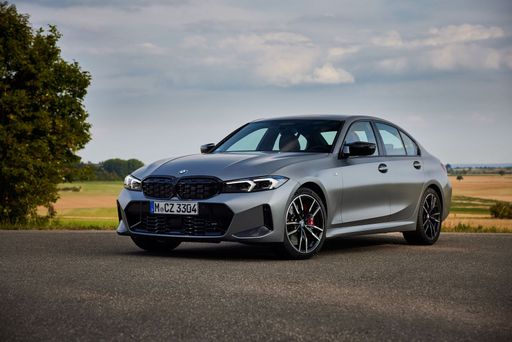 @ press.bmwgroup.com
@ press.bmwgroup.com
 @ press.bmwgroup.com
@ press.bmwgroup.com
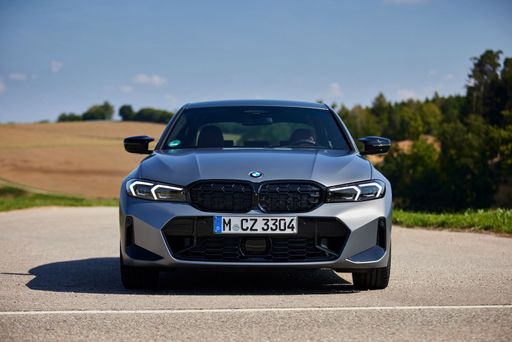 @ press.bmwgroup.com
@ press.bmwgroup.com
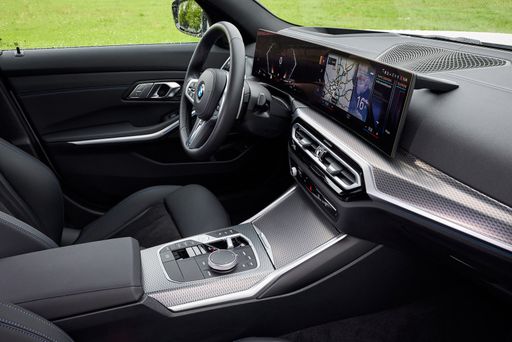 @ press.bmwgroup.com
@ press.bmwgroup.com
 @ press.bmwgroup.com
@ press.bmwgroup.com
VW Passat
The VW Passat is a staple in the family saloon segment, known for its refined design and practicality. It effortlessly combines a comfortable ride with a spacious interior, making it a popular choice for long journeys. The cabin features high-quality materials and an intuitive infotainment system, providing a premium feel without sacrificing user-friendliness.
details @ volkswagen-newsroom.com
@ volkswagen-newsroom.com
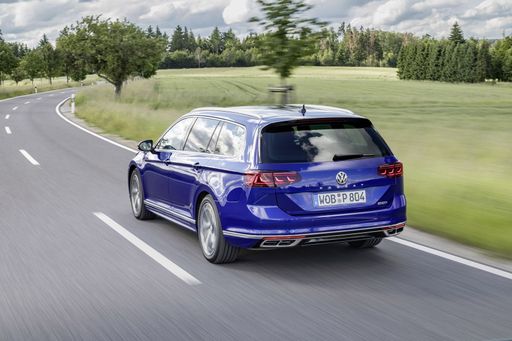 @ volkswagen-newsroom.com
@ volkswagen-newsroom.com
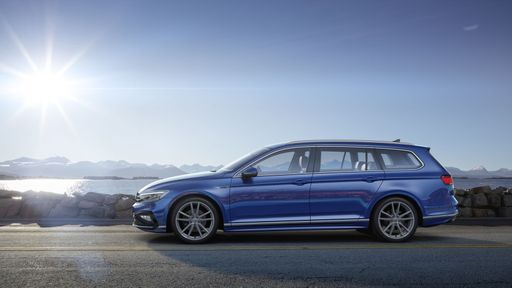 @ volkswagen-newsroom.com
@ volkswagen-newsroom.com
 @ volkswagen-newsroom.com
@ volkswagen-newsroom.com

|

|
|
|
|
Costs and Consumption |
|
|---|---|
|
Price
39900 - 91000 £
|
Price
35700 - 58500 £
|
|
Consumption L/100km
0.8 - 10.1 L
|
Consumption L/100km
0.3 - 8 L
|
|
Consumption kWh/100km
-
|
Consumption kWh/100km
-
|
|
Electric Range
96 - 101 km
|
Electric Range
124 - 133 km
|
|
Battery Capacity
19.50 kWh
|
Battery Capacity
19.70 kWh
|
|
co2
19 - 227 g/km
|
co2
7 - 181 g/km
|
|
Fuel tank capacity
40 - 59 L
|
Fuel tank capacity
45 - 66 L
|
Dimensions and Body |
|
|---|---|
|
Body Type
Sedan
|
Body Type
Estate
|
|
Seats
5
|
Seats
5
|
|
Doors
4
|
Doors
5
|
|
Curb weight
1575 - 1960 kg
|
Curb weight
1573 - 1858 kg
|
|
Trunk capacity
375 - 480 L
|
Trunk capacity
510 - 690 L
|
|
Length
4713 - 4801 mm
|
Length
4917 mm
|
|
Width
1827 - 1903 mm
|
Width
1849 mm
|
|
Height
1437 - 1446 mm
|
Height
1521 mm
|
|
Max trunk capacity
-
|
Max trunk capacity
1770 - 1920 L
|
|
Payload
405 - 495 kg
|
Payload
501 - 577 kg
|
Engine and Performance |
|
|---|---|
|
Engine Type
Diesel MHEV, Plugin Hybrid, Petrol, Petrol MHEV
|
Engine Type
Plugin Hybrid, Petrol, Petrol MHEV, Diesel
|
|
Transmission
Automatic, Manuel
|
Transmission
Automatic
|
|
Transmission Detail
Automatic Gearbox, Manual Gearbox
|
Transmission Detail
Dual-Clutch Automatic
|
|
Drive Type
Rear-Wheel Drive, All-Wheel Drive
|
Drive Type
Front-Wheel Drive, All-Wheel Drive
|
|
Power HP
150 - 530 HP
|
Power HP
122 - 272 HP
|
|
Acceleration 0-100km/h
3.5 - 8.6 s
|
Acceleration 0-100km/h
5.8 - 10.7 s
|
|
Max Speed
218 - 250 km/h
|
Max Speed
212 - 250 km/h
|
|
Torque
250 - 700 Nm
|
Torque
250 - 400 Nm
|
|
Number of Cylinders
4 - 6
|
Number of Cylinders
4
|
|
Power kW
110 - 390 kW
|
Power kW
90 - 200 kW
|
|
Engine capacity
1995 - 2998 cm3
|
Engine capacity
1498 - 1984 cm3
|
General |
|
|---|---|
|
Model Year
2024 - 2025
|
Model Year
2024 - 2025
|
|
CO2 Efficiency Class
D, E, B, F, G
|
CO2 Efficiency Class
B, G, D, E
|
|
Brand
BMW
|
Brand
VW
|
What drive types are available for the BMW 3 Series Saloon?
The BMW 3 Series Saloon is offered with Rear-Wheel Drive or All-Wheel Drive.
The prices and data displayed are estimates based on German list prices and may vary by country. This information is not legally binding.
